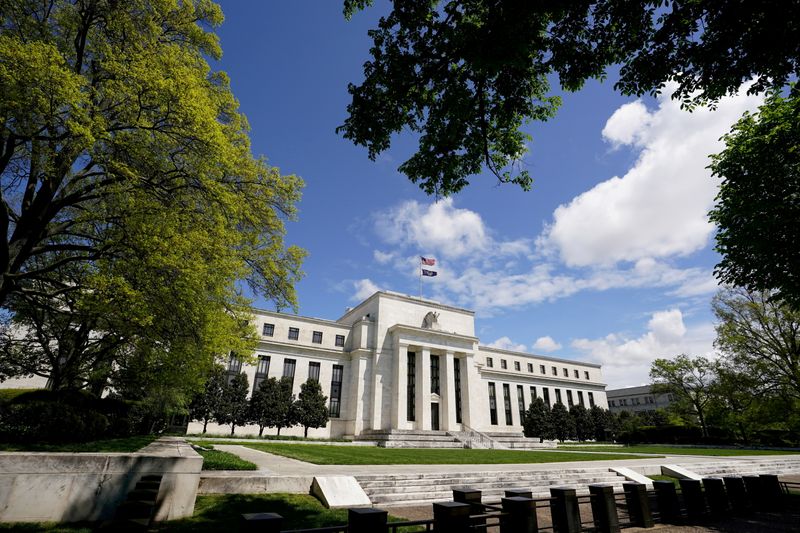By Howard Schneider
WASHINGTON (Reuters) - Last December, with COVID-19 vaccinations only just beginning and the pandemic still raging, the U.S. Federal Reserve promised it would continue supporting the recovery with $120 billion in monthly bond purchases until there had been "substantial further progress" in meeting it goals of 2% inflation and maximum employment.
At the end of its November policy meeting on Wednesday the central bank is likely to declare that standard met, clearing the way to trim $120 billion in monthly bond buying and eventually raise interest rates.
How substantial has the progress been?
In the case of inflation, probably more than the Fed bargained for. The annual rate of price increases was 1.3%, measured by the Fed's preferred Personal Consumption Expenditures price index, at the time the "substantial further progress" benchmark was set. It has been more than 4% since May.
(GRAPHIC: Inflation jumps - https://graphics.reuters.com/USA-FED/JOBS/gkplgxreevb/chart.png)
The job market has been more of a mixed picture.
Employment has been slower to rebound, for example, than the overall level of economic output. Gross domestic product is now above where it was pre-pandemic, while jobs remain more than 3% below that level.
(GRAPHIC: Jobs lagging GDP Jobs lagging GDP - https://graphics.reuters.com/USA-FED/JOBGROWTH/xegpbzzrbpq/chart.png)
In one sense that's a promising development because it means higher worker productivity - fewer people producing an increased amount of goods and services.
But it also reflects a potential scar to the degree people who want to work aren't getting hired, or, given the Fed's new commitment to an inclusive recovery, to the degree job growth is not broadly shared.
That's where the story gets tricky, and makes a Fed declaration of substantial further progress very much a judgment call.
When the Fed put the benchmark in place, the economy was about 10 million jobs short of where it was in February, 2020, before the first wave of pandemic layoffs. About half of those jobs have been regained.
(GRAPHIC: Substantial progress on jobs - https://graphics.reuters.com/USA-FED/JOBS/mopankjnlva/chart.png)
Though 5 million missing jobs is a lot, Fed officials are banking that the record number of openings in the economy means the shortfall relates more to workers becoming choosier about the positions they will accept, an issue Fed policy can't really address, rather than inadequate demand for labor, a problem it could confront. Dialing back the bond buying is the Fed's way of saying that demand - for goods, services and workers - is strong enough now without that additional bit of help.
But it is also a narrower view of the job market than the Fed seemed to adopt last year when it began referring to maximum employment as a "broad-based and inclusive goal."
A range of metrics - the unemployment rate for Blacks, the labor force participation rate for women, the share of the population overall that is working - remain significantly worse than before the pandemic.

(GRAPHIC: "Substantial further progress" for the Fed? - https://graphics.reuters.com/USA-ECONOMY/FEDPROGRESS/yzdvxmmmdpx/chart.png)
In a broad sense progress may have been substantial over the last year. The Fed now turns to debating how much more progress is needed to meet its goals, on jobs in particular, and how much is possible while keeping inflation under control.